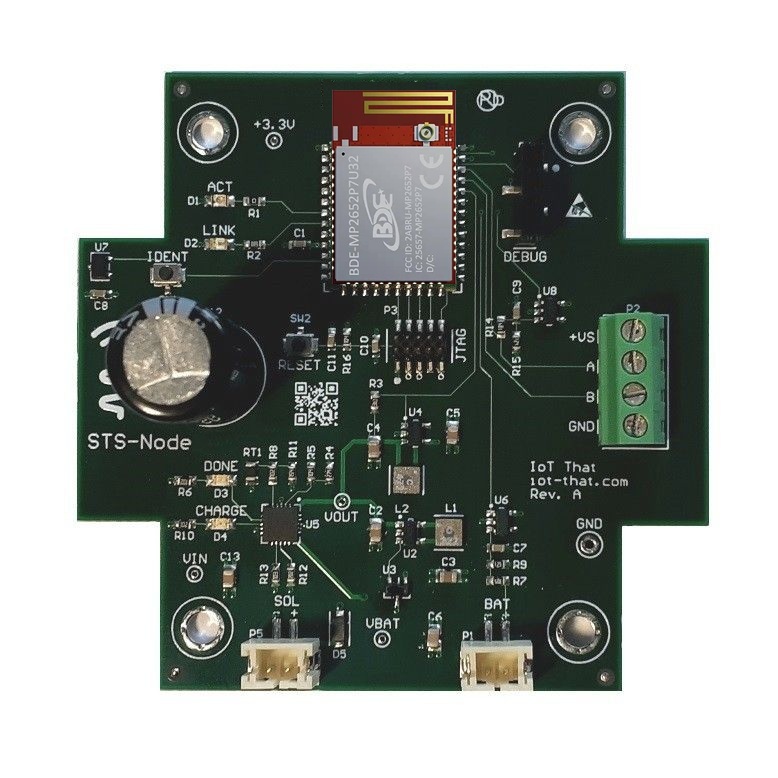STS-Node-ZB
SKU
STS-Node-ZB
STS-Node-ZB
STS-Node-ZB is a Wireless Sensor Node with a Universal Sensor Interface (USI) that allows any type of sensor to be used and is part of our IoT ecosystem.
STC-Node-ZB uses Zigbee and adds three important features:
- Mesh routing - uses routing tables that define how one radio can pass messages through a series of other radios along the way to their final destination.
- Ad hoc network creation - an automated process that creates an entire network of radios on the fly, without any human intervention.
- Self-healing mesh - a process that automatically figures out if one or more radios are missing from the network and reconfigures the network to repair any broken routes.
Every Zigbee network assigns different roles to the radio modules or nodes. These include:
- Coordinator - This radio is responsible for forming the network, handing out addresses, and managing the other functions that define the network, secure it, and keep it healthy. Each network must be formed by a coordinator and there’s never more than one coordinator in your network.
- Router - a router is a full-featured Zigbee node. It can join existing networks, send information, receive information, and route information. Routing means acting as a messenger for communications between other devices that are too far apart to convey information on their own. Routers are typically plugged into an electrical outlet because they must be turned on all the time. A Zigbee network generally has multiple router radios.
- End device - End devices are essentially stripped-down versions of a router. They can join networks and send and receive information, but that’s about it. They don’t act as messengers between any other devices, so they can use less expensive hardware and can power themselves down intermittently, saving energy by going temporarily into a nonresponsive sleep mode. End devices always need a router or the coordinator to be their parent device to help them join the network, and store messages when they are asleep. Zigbee networks may have any number of end devices.
STS-Node-ZB Board

Features
- Powered Outdoors by Harvesting Natural Light
- 2000mAh Lithium-Ion Polymer Battery
- Powered Indoors using a USB power source
- High-Efficiency 2-Watt Mono-crystalline Solar Panel
- USB-Serial Command Line Interface
- Sensors are easily joined with the touch of a magnet
- Plug and Play setup, no configuration or settings required
- Data is secured using AES-256-CBC-MAC
- Universal Sensor Interface (USI) ADC, I2C, SPI, UART, 4-20mA, Modbus, RS232/RS485
Environmental
- IP65 Rated Enclosure, NEMA 1,2,4,4X,12,13, UL-508
- Dust Tight, Water Tight
- Operating Temperature: -40 ℃ to 65 ℃, non-condensing
- Restriction of Hazardous Substances (RoHS), Directive 2002/95/EC
Certifications
- FCC ID: 2ABRU-MP2652P7
- IC: 25657-MP2652P7
Mechanical
- Dimensions 4.307" L x 3.283" W x 2.166" H (109.4mm x 83.4mm x 55mm)
- Mounting Flange
- Mechanical View
Included
- Brackets for 2-inch pole mount
- High Efficiency 2 Watt Mono-crystalline Solar Panel
- Solar Panel Bracket for 2-inch pole mount
- 2000mAh Lithium-Ion Polymer Battery
- Plastic, Polycarbonate enclosure
Price
CA$249.00
